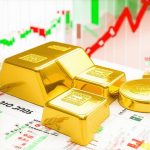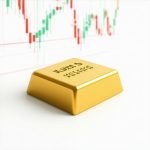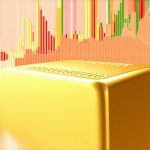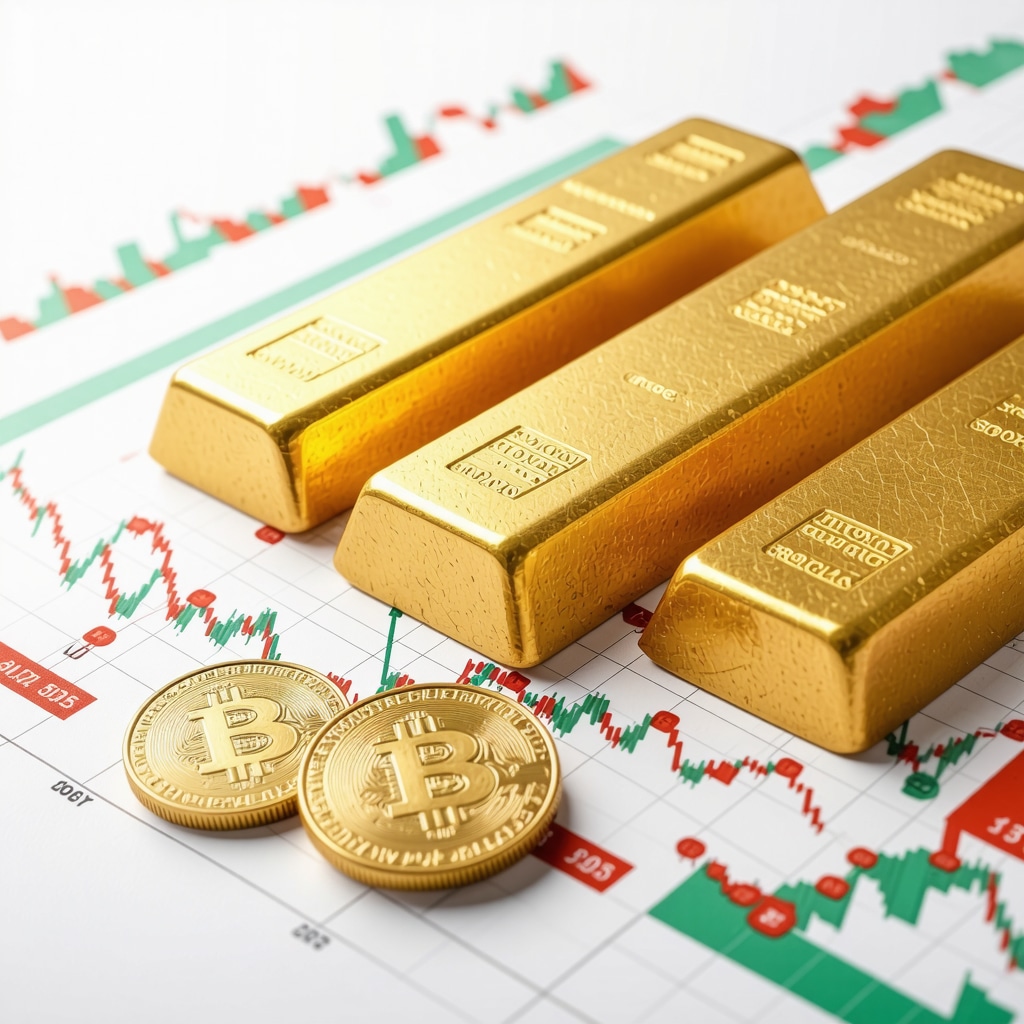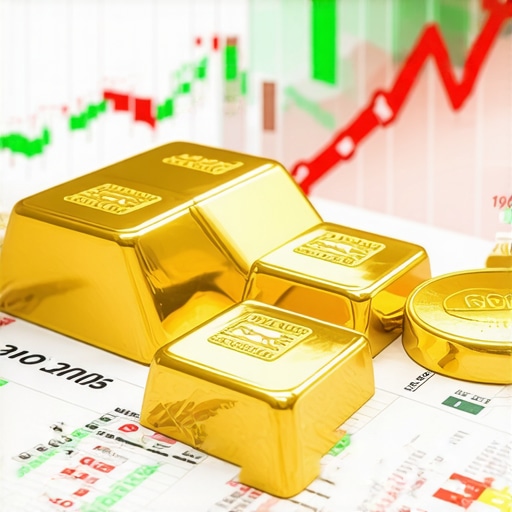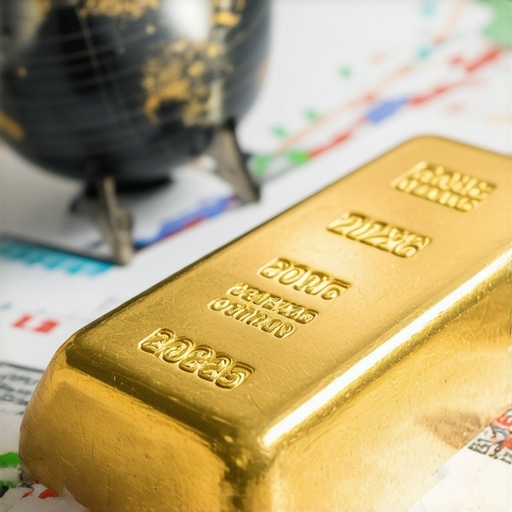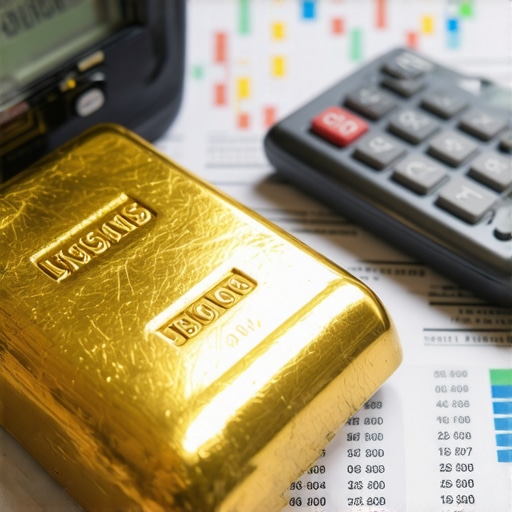Unlocking the Secrets Behind Gold Demand in 2025
As global economic dynamics shift, understanding the nuanced trends in gold demand becomes indispensable for investors aiming to safeguard and grow their wealth. The year 2025 is shaping up to be a pivotal moment for gold markets, driven by a confluence of geopolitical tensions, inflation concerns, and evolving consumer behaviors. This analysis dives deep into the forces molding gold demand, offering investors a strategic lens to navigate the complexities ahead.
Decoding the Drivers: What’s Fueling Gold’s Appeal?
Gold’s timeless allure as a safe haven asset is being reinforced by rising inflationary pressures and uncertainty in traditional equity markets. Central banks worldwide are actively adjusting their gold reserves, which significantly impacts demand and price volatility. Furthermore, technological advances in electronics and increasing demand for sustainable, ethically sourced gold influence supply chains and market perceptions. For instance, emerging markets, particularly in Asia, continue to drive robust physical gold purchases, especially in jewelry and investment-grade bullion.
How Do Central Bank Policies Influence Gold Demand in 2025?
Central banks have resumed aggressive gold purchasing strategies post-pandemic, viewing gold as a strategic asset to hedge against currency volatility and geopolitical risks. This trend, documented by the World Gold Council, indicates a shift toward diversification away from fiat currencies. Consequently, investors should monitor central bank reserves as a barometer for gold’s future price trajectory. The interplay between monetary policy adjustments and gold demand underscores the metal’s role beyond mere commodity status, positioning it as a cornerstone in global financial stability strategies.
Investment Implications: Strategies to Harness Gold’s Potential
Investors must consider diversified approaches to capitalize on gold demand trends. Physical gold, including coins and bars, offers tangible security but requires prudent storage solutions and dealer vetting. Alternatively, gold ETFs and mutual funds provide liquidity and ease of access, appealing to portfolios seeking flexibility. For those inclined toward trading, understanding futures contracts and market timing is critical to maximizing returns in volatile conditions. Resources like comprehensive market analyses can equip investors with data-driven insights for smarter decision-making.
The Ethical Shift: How Sustainability Shapes Gold Demand
Increasingly, ethical sourcing and environmental considerations are influencing investor choices and consumer demand. Gold sourced through responsible mining practices is gaining preference, impacting supply chains and potentially premium pricing. Investors attentive to ESG (Environmental, Social, Governance) criteria may find opportunities in funds and products emphasizing sustainable gold, aligning financial goals with conscientious investing.
Tap Into Expert Insights: Join the Conversation
If these evolving gold demand trends spark your interest or raise questions, share your thoughts and experiences below. Engaging with fellow investors and experts can deepen understanding and uncover new strategies tailored for 2025’s unique market landscape.
For further authoritative reading on the strategic role of central banks in gold markets, visit the World Gold Council’s official research.
Personal Lessons From Embracing Gold Investment in a Changing Market
Reflecting on my journey with gold investing, I’ve come to appreciate how dynamic and multifaceted this asset truly is. Early on, I leaned heavily into physical gold bars, valuing the tangible security they offered during volatile market periods. However, as I delved deeper, I realized that relying solely on physical gold could limit flexibility—something many newcomers might overlook. This pushed me to explore ETFs and mutual funds, which provide a more liquid approach and allow for easier portfolio adjustments. Balancing these investment vehicles helped me not only protect my wealth but also capitalize on market fluctuations.
One insight I gained is the importance of staying informed about global economic policies, especially central bank activities. Their strategic gold purchases, as highlighted by the World Gold Council, often signal broader market shifts that can affect prices. I found that monitoring these signals early enabled me to time my entries and exits more effectively.
Integrating Sustainability: More Than Just a Trend
In recent years, the ethical sourcing of gold has become a significant factor in my investment decisions. Not only does it align with my personal values, but it also reflects a market shift where consumers and investors increasingly demand responsible mining and transparent supply chains. This shift means that products labeled as sustainably sourced often command a premium, yet they offer peace of mind and potentially lower long-term risks associated with environmental or social controversies.
From conversations with fellow investors, I learned that ESG-focused gold funds are gaining traction, offering a way to support sustainable mining while maintaining exposure to gold’s financial benefits. This approach blends financial prudence with ethical responsibility, creating a more holistic investment strategy for the future.
How Can You Balance Profit and Principles in Gold Investing?
It’s a question I often ponder and discuss with peers: How do you reconcile the desire for strong returns with the imperative for ethical investing? My experience suggests that educating yourself on ESG certifications and choosing funds or dealers with clear sustainability commitments is key. This not only helps avoid potential pitfalls but also positions your portfolio to benefit from the growing demand for green investments.
For those interested in diving deeper, exploring smart gold investment strategies tailored for 2025 can offer practical approaches to harmonize financial goals with sustainability.
Sharing Your Gold Investment Experiences
Have you experimented with different types of gold investments or integrated ethical considerations into your portfolio? What challenges or successes have you encountered along the way? Sharing these stories can be incredibly valuable for others navigating the complexities of gold markets today. Feel free to comment below or join discussions on forums and communities focused on gold investing strategies.
Remember, the more we exchange insights, the better equipped we all become to make informed decisions in this ever-evolving landscape.
Unraveling Complex Market Indicators: The Subtle Signals Behind Gold Demand Fluctuations
Beyond the obvious macroeconomic drivers, subtle market indicators often provide early warnings or confirmations of shifts in gold demand. These include intermarket relationships such as the correlation between gold prices and real interest rates, currency strength, and bond yields. For instance, when real yields fall, gold becomes more attractive as it does not yield interest but offers intrinsic value preservation, prompting increased demand. Conversely, rising yields might temper gold investment appetite, although geopolitical instability can override this trend.
Additionally, the nuanced behavior of derivatives markets, especially options and futures positioning, signals investor sentiment and hedging behavior. Sophisticated investors track the Commitment of Traders (COT) reports to gauge institutional positioning, which can precede price movements. Understanding these layers equips investors with a tactical advantage beyond surface-level analysis.
How Do Real Interest Rates and Inflation Expectations Interact to Influence Gold Demand?
This question delves into a sophisticated macro-financial interplay. Gold is traditionally viewed as a hedge against inflation; however, its sensitivity to real interest rates—that is, nominal rates adjusted for inflation expectations—is critical. When inflation expectations rise but real rates remain negative or low, gold demand typically surges due to its opportunity cost advantage over interest-bearing assets. Conversely, if central banks increase nominal rates aggressively, pushing real rates positive, gold’s allure may diminish despite inflation fears.
Recent studies, such as those published by the National Bureau of Economic Research, emphasize that gold demand is more closely correlated with real interest rate dynamics than with headline inflation alone. This underscores why investors must monitor not just inflation data but also central bank policy signals and market-based inflation expectations, such as breakeven inflation rates derived from Treasury Inflation-Protected Securities (TIPS).
Technological Evolution and Gold: Emerging Influences on Demand and Supply Chains
Technological advancements, particularly in electronics, renewable energy, and medical devices, have reshaped gold demand patterns. Gold’s superior conductivity and corrosion resistance make it indispensable in high-precision applications like semiconductors and implantable medical devices. The rise of electric vehicles and 5G technology is expected to amplify industrial gold demand, creating a new dimension beyond traditional investment and jewelry sectors.
Simultaneously, blockchain and digital ledger technologies are transforming gold provenance verification and trading transparency. These innovations facilitate traceability across supply chains, mitigating risks related to conflict minerals and enhancing consumer trust in ethically sourced gold. Such technologies not only affect demand but may also streamline inventory management and reduce counterparty risk in gold markets.
Integrating Quantitative Models: Predictive Analytics for Gold Demand Forecasting
Advanced investors and institutions increasingly rely on quantitative models incorporating machine learning and big data to forecast gold demand. These models synthesize macroeconomic variables, geopolitical risk indices, sentiment analysis from news and social media, and supply chain disruptions to generate probabilistic forecasts. For instance, integrating satellite data on mining activity or logistics bottlenecks enhances supply-side insights, while sentiment analytics capture market psychology shifts.
This approach transcends traditional fundamental analysis, offering nuanced, dynamic predictions that accommodate rapid market changes. Investors equipped with such predictive tools can optimize entry and exit points, hedge more effectively, and tailor portfolio exposure to evolving risk scenarios.
Engage With Experts: Deepen Your Understanding and Sharpen Your Strategy
Are you interested in exploring how advanced analytics and sustainable practices reshape gold investment opportunities? Join our upcoming webinar featuring market strategists and ESG experts who will dissect these trends with actionable insights. Engage in live Q&A sessions to address your specific challenges and leverage expert knowledge to refine your portfolio strategy for 2025 and beyond.
For further in-depth research, consult the National Bureau of Economic Research’s study on real interest rates and gold demand, a seminal resource for advanced investors seeking to understand the interplay between macroeconomic variables and precious metals markets.
Decoding Nuanced Market Signals: Beyond Conventional Indicators
While traditional macroeconomic factors such as inflation and geopolitical uncertainty set the stage for gold demand, seasoned investors recognize the imperative of interpreting more subtle, yet telling, market cues. For example, the intricate relationship between gold prices, currency fluctuations, and sovereign bond yields often provides an early glimpse into impending shifts in investor sentiment. The complexity of these interdependencies necessitates a multi-dimensional analytical approach, integrating data from derivatives positioning, such as options and futures markets, to reveal institutional hedging strategies that often precede price movements.
What Advanced Analytical Techniques Best Predict Gold Demand in Volatile Markets?
In an era dominated by rapid data proliferation, leveraging machine learning algorithms and big data analytics has revolutionized gold demand forecasting. These sophisticated models amalgamate macroeconomic indicators, geopolitical risk indices, real-time sentiment analysis from social media, and supply chain logistics data to provide probabilistic demand scenarios. Incorporating alternative data sources, like satellite imagery tracking mining outputs or blockchain-verified supply chain transparency, further refines predictive accuracies. Such technological integration enables investors to discern nuanced demand drivers beyond surface trends, optimizing timing and allocation strategies in a fluctuating market environment.
For researchers and investors seeking a rigorous exploration of macro-financial drivers influencing gold demand, the National Bureau of Economic Research offers comprehensive studies elucidating the pivotal role of real interest rates and inflation expectations.
Technological Disruptions Shaping Gold’s Industrial and Ethical Landscape
Gold’s role transcends mere investment utility, increasingly intertwining with cutting-edge technological sectors. The metal’s unparalleled electrical conductivity and resistance to corrosion make it indispensable in burgeoning industries like 5G infrastructure, electric vehicle batteries, and high-precision medical devices. This industrial demand, juxtaposed with rising ethical imperatives, is catalyzing innovations in traceability and provenance verification through blockchain technology. Such advancements not only enhance consumer trust by mitigating risks related to conflict minerals but also streamline inventory and trading processes, reducing counterparty risks and fostering market transparency.

Aligning Profitability with Sustainability: Navigating Ethical Gold Investment Strategies
Modern investors are increasingly challenged to reconcile robust financial returns with rigorous ESG standards. This necessitates a discerning evaluation of gold products and funds that demonstrate verifiable commitments to responsible mining and transparent supply chains. Incorporating ESG-compliant gold investments not only mitigates exposure to reputational and regulatory risks but also positions portfolios to capitalize on the escalating demand for ethically sourced assets. As awareness grows, sustainably certified gold products may command valuation premiums, reflecting their embedded social and environmental values alongside intrinsic metal worth.
Engage with Industry Experts: Elevate Your Gold Investment Approach
To further deepen your understanding of these advanced gold market dynamics and sustainable investment frameworks, consider participating in specialized forums and webinars featuring leading market strategists, ESG analysts, and quantitative modelers. Engaging directly with experts facilitates nuanced discourse and equips you with actionable insights tailored to the evolving 2025 landscape. Harness the power of informed dialogue to refine your strategies and achieve a sophisticated, resilient gold portfolio.
Take the next step in mastering gold investment by exploring advanced analytical methodologies and ethical frameworks—your portfolio’s future depends on it.
Frequently Asked Questions (FAQ)
What factors are driving gold demand in 2025 beyond traditional safe-haven appeal?
In 2025, gold demand is influenced not only by its historic role as a hedge against inflation and geopolitical uncertainty but also by growing industrial applications in electronics, medical devices, and renewable energy. Additionally, central bank reserve accumulation, ethical sourcing preferences, and technological innovations like blockchain for provenance verification are reshaping demand dynamics.
How do central bank policies affect gold prices and demand?
Central banks actively purchasing gold to diversify reserves and hedge against currency volatility tend to drive up demand and price. Their strategies signal market confidence or caution, often preceding broader investor behavior. Monitoring central bank gold reserve changes provides valuable foresight into potential price trajectories.
What role do real interest rates and inflation expectations play in gold investment decisions?
Gold demand is highly sensitive to real interest rates—nominal rates adjusted for inflation. When real rates are low or negative, gold becomes more attractive since it doesn’t yield interest but preserves value. Rising inflation expectations combined with subdued real yields typically boost gold demand, while increasing real rates can dampen it despite inflation concerns.
How can investors balance ethical considerations with profitability in gold investing?
Integrating ESG (Environmental, Social, Governance) criteria involves selecting sustainably sourced gold products and funds with transparent supply chains. Although such investments may carry premium pricing, they reduce reputational and regulatory risks and align portfolios with growing consumer and investor demand for responsible assets, thereby supporting long-term profitability.
What are the advantages and disadvantages of investing in physical gold versus gold ETFs?
Physical gold offers tangible security and direct ownership but requires secure storage and can lack liquidity. Gold ETFs provide ease of trading, portfolio flexibility, and lower transaction costs but expose investors to counterparty risks and lack the tactile asset security. A diversified approach combining both can optimize benefits.
How do technological advancements influence gold demand and supply?
Technologies like 5G, electric vehicles, and medical devices increase industrial gold consumption due to its superior conductivity and durability. Blockchain enhances supply chain transparency, improving provenance verification and consumer trust. These trends expand demand beyond traditional sectors and promote ethical sourcing.
What predictive tools can investors use to forecast gold demand effectively?
Advanced quantitative models leveraging machine learning, big data analytics, geopolitical risk indices, and sentiment analysis provide probabilistic forecasts. Incorporating alternative data such as satellite mining activity and blockchain supply chain data enhances accuracy, enabling more informed timing and allocation decisions.
Why is it important to analyze derivatives market data like the Commitment of Traders reports?
Derivatives positioning reveals institutional investor sentiment and hedging strategies ahead of price movements. Tracking metrics like the Commitment of Traders (COT) reports allows investors to anticipate market shifts and adjust strategies proactively, gaining an edge in volatile environments.
How does gold’s role in industrial applications affect its market dynamics?
Industrial demand driven by electronics, renewable energy, and medical sectors adds a non-investment dimension to gold consumption, increasing baseline demand and potentially moderating price volatility. This diversification supports a more resilient market amid fluctuating investment flows.
What strategies should investors consider to optimize gold portfolio performance in 2025?
Investors should adopt a multi-faceted approach combining physical holdings, ETFs, and futures trading while monitoring macroeconomic indicators, central bank actions, and ethical sourcing trends. Leveraging advanced analytics and staying engaged with expert communities further refines decision-making and risk management.
Trusted External Sources
- World Gold Council (WGC): As the authoritative industry body for gold markets, the WGC provides comprehensive data, research, and insights on gold demand, central bank activity, and ESG trends, essential for understanding market fundamentals.
- National Bureau of Economic Research (NBER): NBER’s rigorous academic studies on macro-financial factors like real interest rates and inflation expectations offer deep theoretical and empirical frameworks crucial for advanced gold demand analysis.
- International Council on Mining and Metals (ICMM): This organization offers critical guidance on responsible mining practices, sustainability standards, and ethical sourcing, informing the evolving ESG landscape in gold investment.
- Bloomberg Terminal and Refinitiv: Leading financial data platforms providing real-time market data, derivatives positioning, and sentiment analytics that empower investors to track subtle market signals and optimize timing.
- MIT Media Lab and Blockchain Research Centers: They provide pioneering research on blockchain applications in supply chain transparency, enhancing traceability and trust in ethically sourced gold products.
Conclusion
Gold demand in 2025 is shaped by a complex interplay of traditional safe-haven appeal, evolving industrial uses, central bank policies, and a growing emphasis on ethical sourcing supported by technological innovation. Investors who integrate macroeconomic fundamentals with advanced predictive analytics and sustainability criteria are best positioned to navigate the shifting landscape. Balancing physical holdings with liquid financial instruments and staying attuned to nuanced market signals can optimize portfolio resilience and growth.
As the gold market continues to evolve, ongoing engagement with expert insights and trusted research sources will empower investors to make informed, strategic decisions. Share your perspectives, explore related expert content, and apply these advanced strategies to harness the full potential of gold investments in 2025 and beyond.
